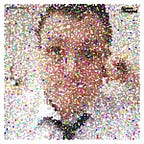Lord of the Rings: The Fellowship of the Ring (2001)
[caption id=”attachment_2235" align=”alignright” width=”300"]
The Fellowship. Lovely bunch of chaps.[/caption]
Twitter Plot Summary: Frodo Baggins goes off on an epic quest with three fellow hobbits to destroy the One Ring. He’s joined by a fellowship.
Five Point Summary:
1. Hobbits in Hobbiton. Who’d have thought?
2. The Fellowship is formed.
3. They have a cave troll!
4. “YOU. SHALL NOT. PASS!”
5. Sean Bean makes a stand.
For many years, the Lord of the Rings was often considered to be one of the all time “unfilmable” projects, such was its scope and epic scale. Of course, we then reached a point whereby computer generated imagery came into its own and became a useful film making tool, and thereafter no project was deemed to be off limits for better or for worse. Peter Jackson, the man eventually chosen to bring Middle Earth to the big screen, was previously known for his splatter horrors, mining the horror comedy sub-genre for all its worth. Is this the man who was going to translate these very well respected books into a film trilogy? Well the answer is yes, of course. Not only that, but he did a very fine job of it too.
All of the constituent elements of Middle Earth are established promptly — the history of the Ring, the races who inhabit Middle Earth, the tranquil existence of Hobbiton, and so on, everything infused with a sense of epic scale that only builds as the trilogy goes on. But for now let’s just consider Fellowship on its own merits. As part of the quest to destroy the One Ring — an all powerful ring created by Sauron, now a malevolent giant eye, in order to enslave all of Middle Earth — a party of all the main races in Middle Earth unite to form the titular Fellowship. Amongst their number are four Hobbits, an elf, a dwarf, two Men and a wizard — Gandalf. In every respect each of these characters are examples of spot-on casting choices. Sean Bean is in typical form as Boromir, whilst Orlando Bloom is in no risk of stretching his acting skills as the mostly emotionless Legolas. John Rhys-Davies as dwarf Gimli is an amusing prospect given that he’s over 6 foot tall in real life. Viggo Mortensen, a latecomer to the set as Aragorn, provides a generally understated yet equally as powerful performance. The Hobbit actors (Wood, Monaghan, Astin and Boyd), although they start to come into their own in the subsequent films. Finally there’s Ian McKellen who is understandably very good (this is an understatement) as Gandalf.
Filming in his native New Zealand was an obvious choice for Peter Jackson in hindsight — not only does it have the calmer aspects of the British countryside that are appropriate for Hobbiton, but it also has numerous mountains and forests that are seemingly perfect representations of Middle Earth. It all adds a distinct air of realism to the place that perhaps wouldn’t be felt if they’d chosen to film elsewhere.
[caption id=”attachment_2236" align=”alignleft” width=”300"]
Obligatory “strike a heroic pose, ready to take on a cave troll” photo.[/caption]
Ignoring the fact that it’s basically a series of films where people walk from one side of their world to the other, the quest itself is riddled with moments of peril and uncertainty. The main set piece takes place in the mines of Moria, now riddled with orcs, cave trolls (“They have a cave troll!”) and a fiery Balrog, all of whom are intent on stopping the Fellowship from escaping and continuing their quest. Other highlights come in the form of the Ring Wraiths, shadowy cloaked figures sent out as emissaries of Sauron to seek the One Ring and kill those who possess it. The Ring Wraiths are Sauron’s evil made real, which is a necessary move given how limited the Evil One’s movement is now that he’s just a giant eye atop a tower.
Of course, it’s not a like for like adaptation of the source material, although of course it is quite close in many respects. There’s much more action here for starters, in a bid to keep the audience entertained rather than make them sit through three hours of people talking and walking from A to B. In the right circumstances that might be acceptable, but it wouldn’t exactly do big box office. There have been attempts at balancing the gender issues that plague, for want of a better term, Tolkien’s original trilogy. Liv Tyler’s Arwen is given a much meatier role than in the books, although her involvement is generally all too brief and in hindsight does little to genuinely balance the gender divide. Still, at least Jackson and his co-writers Philippa Boyens and Fran Walsh were at least aware that the film needed more female input, however brief it may be.
It does suffer from a few other niggling little problems too. Much of the forced perspective techniques work brilliantly, however there are several moments where characters have to be seen in scale with one another and it’s clear that the tiny actors standing in for Elijah Wood et al are evidently not Elijah Wood et al. Similarly whilst the special effects from Weta Workshop are generally impressive, there are a few moments where the characters are clearly computer generated as they run with that telltale gait of a CGI model.
Still, overall these are indeed minor complaints, as the rest of the production is sharp and the story gets the balance between action and quieter moments right. The quest to destroy the One Ring gets off to a strong start and ends at an appropriate point without that feeling of suddenness that often plagues the first and second parts of a movie trilogy.
Score: 4/5
